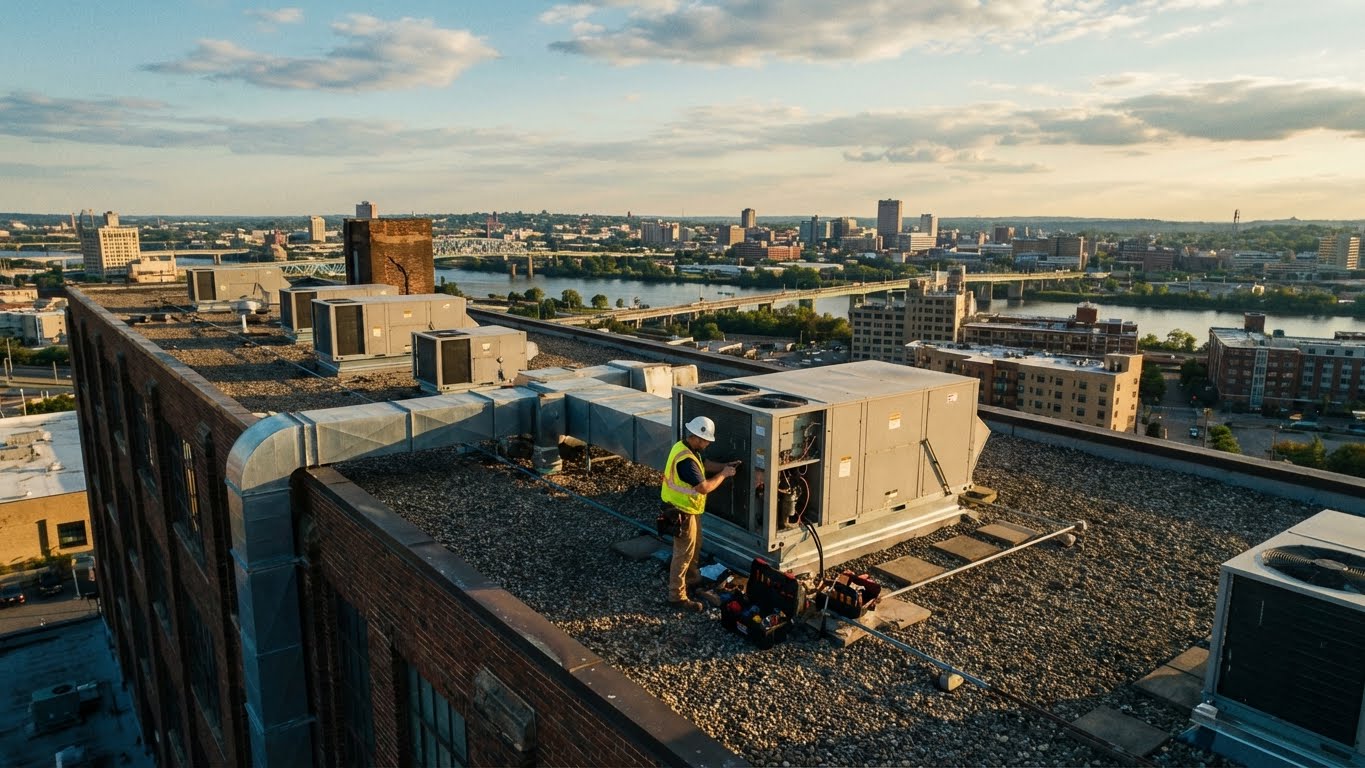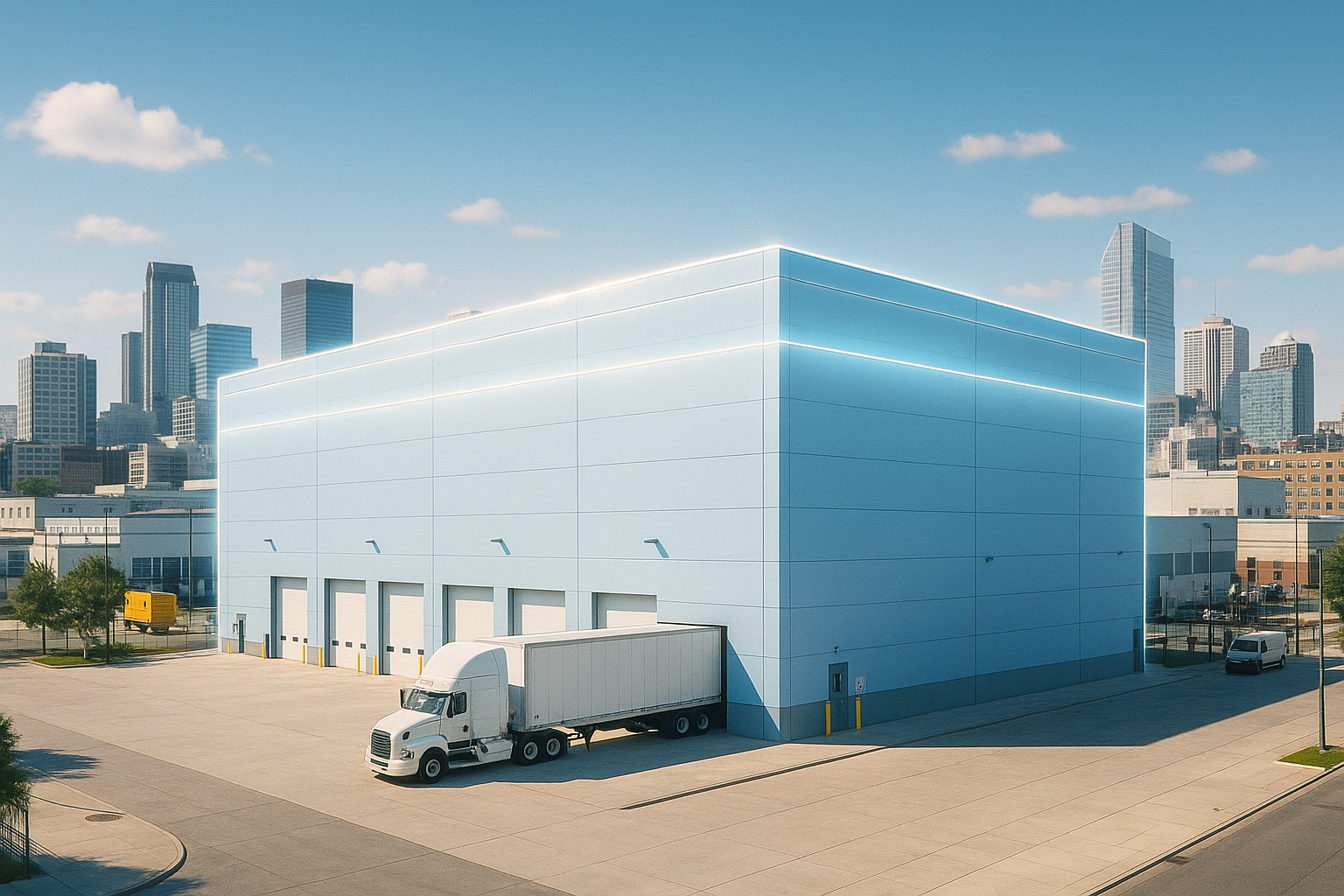The Q1 2025 Industrial MarketBeat from Cushman & Wakefield offers a snapshot of an evolving industrial real estate landscape. For building operators, it serves as a roadmap for informed decisions over the next few quarters.
Let’s break it down into what you really need to know: where the market is moving, what risks and opportunities are emerging, and what you can do right now to stay ahead.
Demand Is Cooling, But It’s Still Steady—For the Right Spaces
Even with trade policy uncertainty, the market absorbed 23.1 million square feet (MSF) in Q1. That’s a sharp drop from the 42.4 MSF absorbed in Q4 2024 but consistent with last year’s Q1 numbers.
Here’s the twist: not all industrial space is created equal. Warehouse and logistics space actually saw positive absorption of 30 MSF, while manufacturing space gave back 5.7 MSF. The real standout? Properties built after 2023 accounted for over 57 MSF of occupancy gains, while older spaces lost 33 MSF.
If your property was built before 2020, it’s time for a serious look at upgrades. Think higher clear heights, dock access, HVAC improvements, or subdividing larger bays. Modern functionality is now table stakes for tenants, especially large third party logistics players who are driving demand.
Vacancy Is Up—But That’s Not Bad News for Everyone
The national vacancy rate rose to 7%, up 30 basis points from the previous quarter and marking the highest level since 2014. That might raise red flags, but context matters.
This increase is being driven mostly by speculative new builds, especially big-box spaces over 250,000 square feet. Meanwhile, smaller warehouses under 100,000 square feet are holding vacancy around 4.1%, showing much tighter conditions.
In fact, vacancy rates in certain regions—like the Midwest—are stabilizing, thanks to steady tenant demand and a tapering off in new construction.
If you manage smaller or mid-size facilities, lean into that strength. Position them as move-in ready solutions for tenants that can’t afford the downtime or costs of large custom builds. Meanwhile, if you’re holding big-box space, be prepared for longer lease-up times and get proactive on incentives.
Rents Are Flattening—But There’s Still Leverage for the Right Owners
On average, industrial rents grew 4.3% year-over-year, but they were flat compared to Q4. Nearly 40% of tracked markets saw rents decline, which means pressure is softening.
This doesn’t necessarily mean rents are falling across the board. Many tenants who signed leases 3–5 years ago are still facing a 50%+ increase upon renewal. Small-footprint properties (under 100,000 sf) are still commanding $12–$15 per square foot, showing how segment-specific this trend really is.
Know your comps. If you’re managing buildings in a market with rising vacancy, you’ll need to get flexible—think escalated free rent, longer build-out periods, or better tenant improvement packages. But if you have space under 100,000 sf in a tight submarket, you still have leverage. Use it.
Construction Is Slowing—And That’s Your Window of Opportunity
Q1 2025 saw only 72.6 msf of new completions, down 41% YOY. It’s the lowest quarterly delivery in four years. Meanwhile, the construction pipeline is down 33% YOY, with just 270.8 msf still underway.
This cooldown is exactly what could bring supply and demand back into balance. Fewer new options mean stabilized rents and better absorption for existing stock—especially in markets where speculative building has paused.
Notably, the West and Midwest have seen the sharpest pullback in construction, while the South is still slightly ramping up.
If you’ve been hesitating to push leasing or reposition older assets, now is the time. As new builds slow, your space becomes more valuable—particularly if you can offer flexible terms or upgrade selectively to meet tenant expectations.
Shifts in Leasing Activity Show Who’s Really Driving the Market
Leasing activity in Q1 came in at just under 140 msf, down 6.4% YOY. That may sound like a slowdown, but the deals are still there—just more focused.
60% of large lease transactions (100,000+ sf) went to buildings constructed after 2020. And across all sizes, third-party logistics (3PL) and manufacturing tenants made up over half of all demand.
That tells you two things:
- Newer buildings with modern specs are still king.
- 3PLs are driving a lot of the leasing momentum—especially those serving last-mile and e-commerce customers.
Tailor your marketing and improvements for 3PL users. That means prioritizing turnaround time, operational efficiency, and amenities like trailer parking, LED lighting, and cross-dock capabilities. If your building doesn’t meet those specs, consider a phased retrofit plan instead of a full repositioning.
Regional Performance: The Midwest Is Quietly Winning
The national story is one of cooling but stability—but the Midwest tells a more optimistic story. This region showed the strongest net absorption at 11.7 MSF in Q1 and maintained one of the lowest vacancy rates at 5.1%.
Markets like Chicago, Indianapolis, and Columbus are proving to be magnets for logistics and manufacturing due to their geographic advantages and accessible labor.
In contrast, the West and South are feeling the brunt of oversupply. Vacancy rates in places like Austin (18.2%) and Phoenix (13.3%) are pushing into double digits.
If you own in the Midwest, now’s the time to double down. Improve tenant retention, lock in long-term leases, and highlight stability in your marketing. If you're in overbuilt Sun Belt markets, prepare for longer lease-up periods and possibly adjust your rent expectations or capital improvement timelines.
Outlook: Be Ready for Disruption and Opportunity
The report flags a few macro-level headwinds that could affect industrial demand later this year:
- Tariff policies may shake up trade routes and sourcing strategies.
- Construction costs remain volatile, discouraging new starts.
- A potential consumer slowdown could drag on warehouse demand.
But there's still good news. E-commerce, domestic manufacturing, and reshoring remain strong pillars of demand. In fact, reshoring trends and domestic inventory strategies are helping to fill gaps left by uncertain global supply chains.
Don’t wait for clarity—start preparing for multiple scenarios. Build flexibility into your leases, offer shorter terms where needed, and stay close to your tenants. If reshoring continues to expand, proximity to transportation hubs and labor markets will become even more critical.
This isn’t a market in crisis. It’s a market in transition.
For you, Q1 2025 marks a pivotal time to reset strategies. You’re no longer competing with a flood of new spec buildings, but you are navigating a more selective tenant pool. Success will go to those who understand the details—space size, building age, tenant type—and who act decisively to meet what the market demands today.
Your best move now? Audit your portfolio, zero in on your high-performing assets, and get honest about which properties need reinvestment or repositioning. The next 12 months will reward smart, focused execution—not just having more square footage.

.png)




.jpg)
%20(1).jpg)
